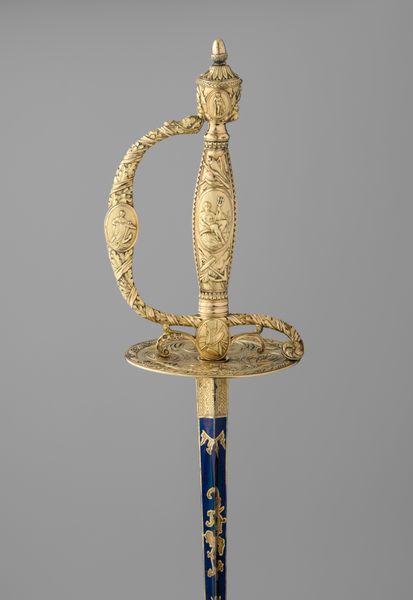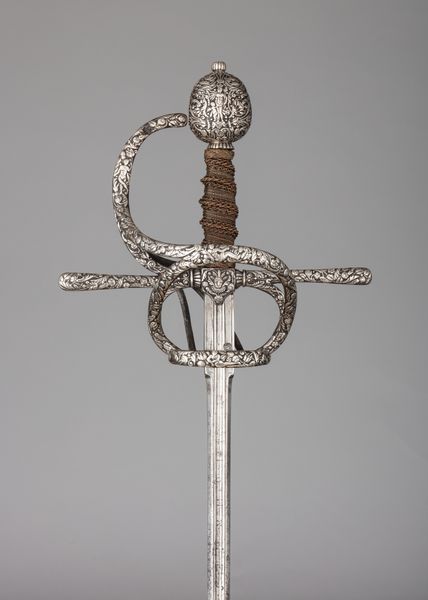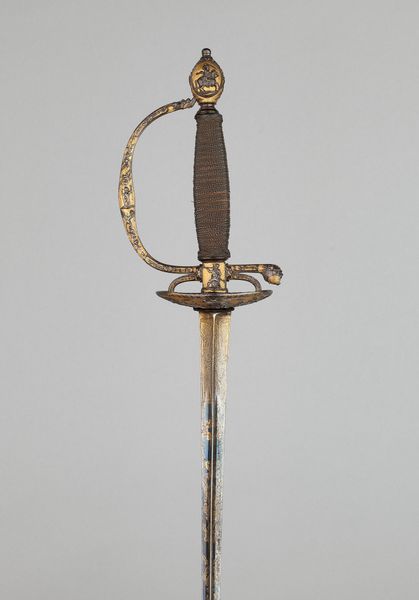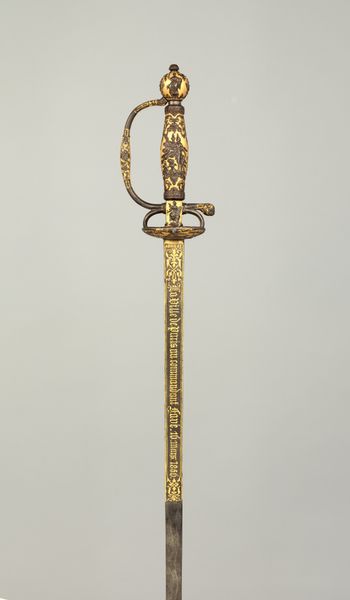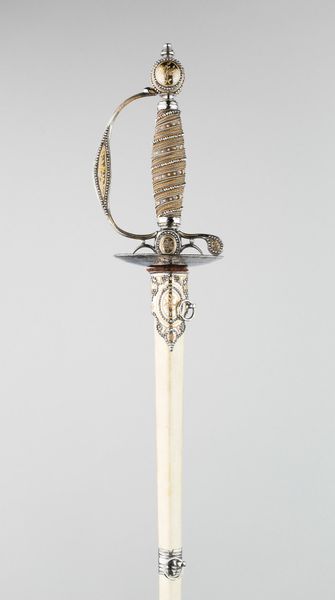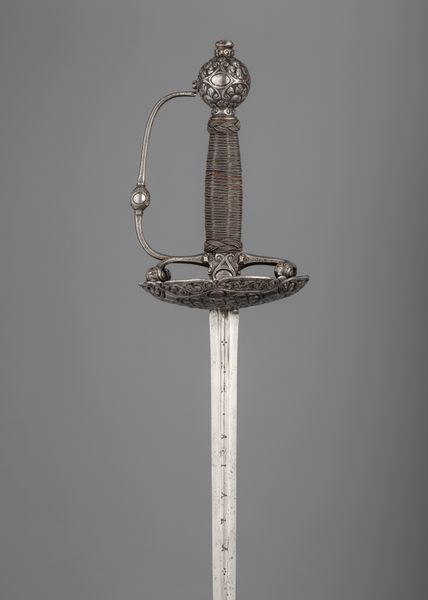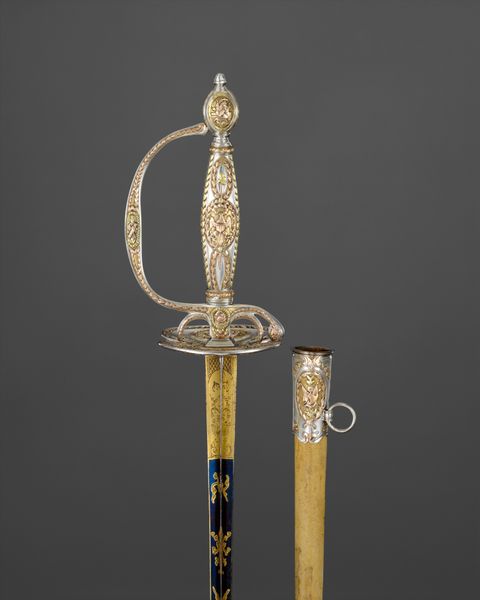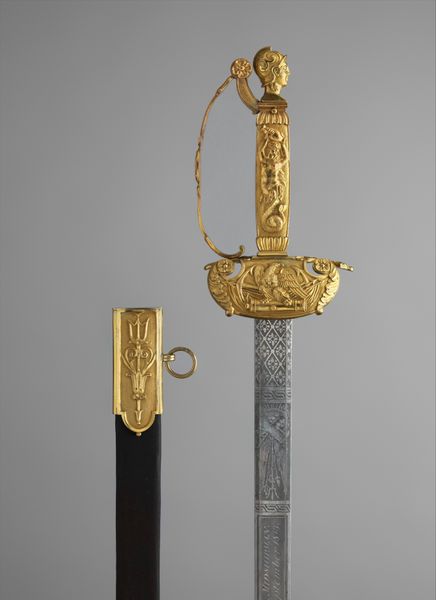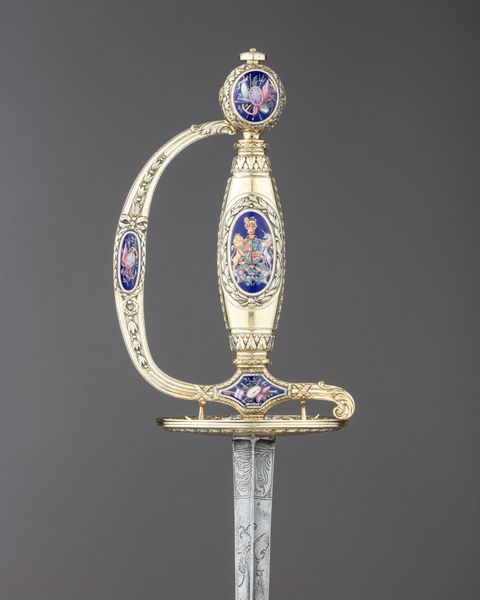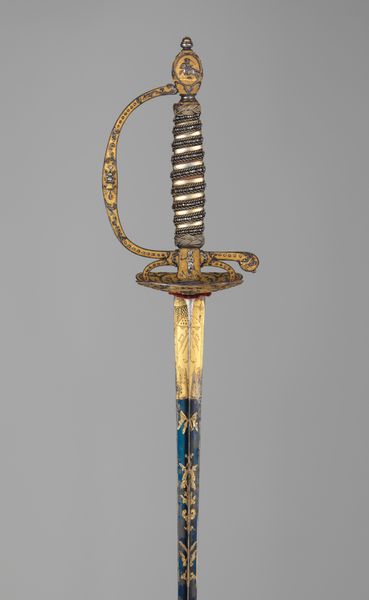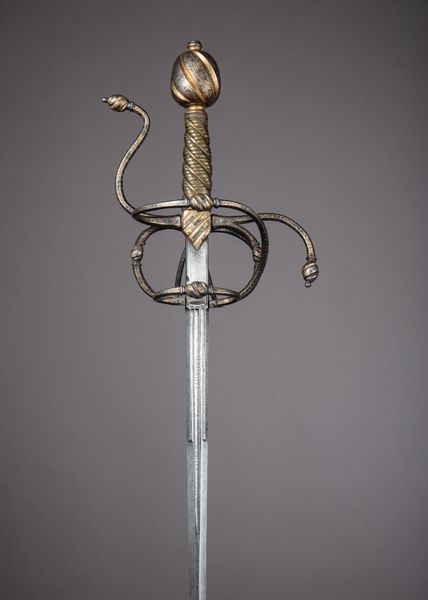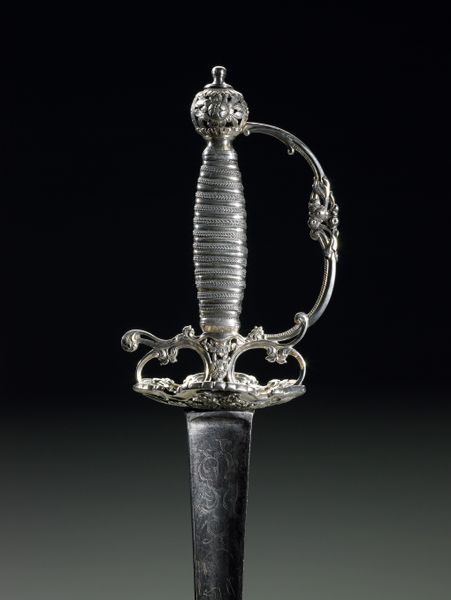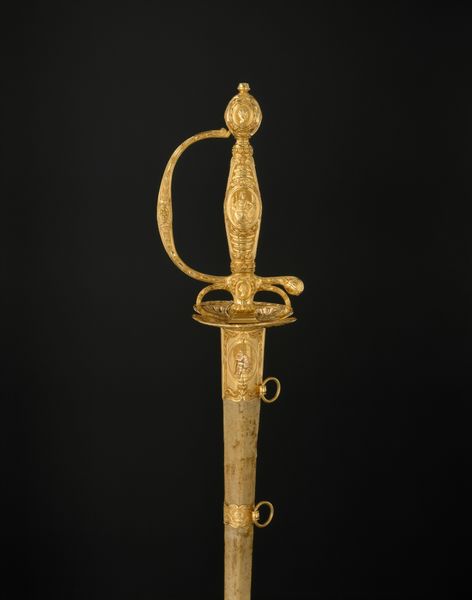
Rapier of Prince-Elector Christian II of Saxony (1583–1611) 1606
0:00
0:00
metal, gold, sculpture, engraving
#
medieval
#
metal
#
sculpture
#
gold
#
mannerism
#
sculpture
#
engraving
#
sword
Dimensions: L. 48 in. (121.9 cm); L. of blade 41 1/4 in. (104.8 cm); W. 6 3/4 in. (17.2 cm); Wt. 3 lb. 4 oz. (1474 g)
Copyright: Public Domain
Editor: We're looking at the Rapier of Prince-Elector Christian II of Saxony. It's from 1606, and it's a stunning display of metalworking with gold and engraving. The piece feels incredibly ornate, almost excessively so. What jumps out at you about its visual qualities? Curator: The immediate emphasis for me falls upon the swirling baroque forms evident in the hilt. The sculptor, Israel Schuech, presents an essay in complex line and intricate, if somewhat dense, ornamentation. The use of precious materials - the gold, the jewels - creates a captivating contrast to the cold steel of the blade. Do you perceive a tension in this contrast? Editor: I hadn't considered it that way, but I see what you mean. There’s almost a clashing of sensibilities—the lethal blade versus the purely decorative goldwork. Is there any significance in the placement or number of gems used, perhaps directing our attention within the composition? Curator: Indeed. The distribution of the gemstones seems carefully considered. They serve to punctuate the gilded framework and further articulate its serpentine dynamism. Moreover, the jewels, acting as concentrated points of color, draw our eye around the complexities of the hilt, thereby orchestrating a kinetic visual experience. Do you discern any organizing principles beyond that? Editor: Perhaps the symmetry of the guard and the pommel provides a counterbalance to the extravagance. I found the amount of labor that went into embellishing it surprising for what's essentially a weapon. I initially focused on its precious materials but will now have a greater appreciation of its forms. Curator: Precisely. Understanding how surface, line, and ornamentation coalesce enriches the aesthetic understanding of even functional art forms.
Comments
No comments
Be the first to comment and join the conversation on the ultimate creative platform.
